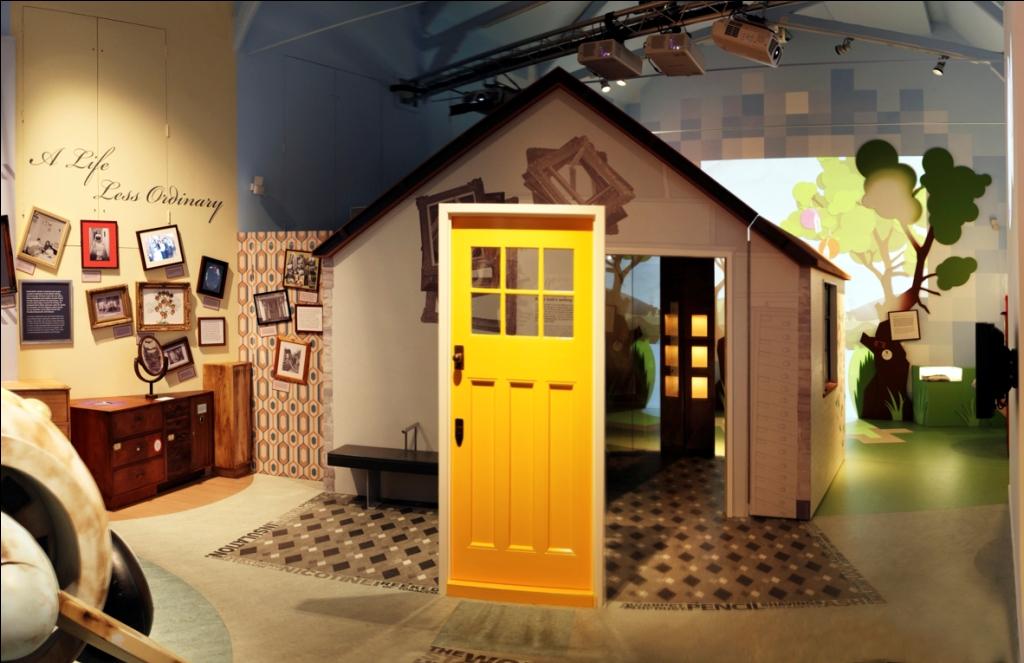On the trail of Roald Dahl in Great Missenden
As a new film adaptation of ‘The BFG’ hits cinemas, head to the Buckinghamshire village the author called home for more than 30 years

Your support helps us to tell the story
From reproductive rights to climate change to Big Tech, The Independent is on the ground when the story is developing. Whether it's investigating the financials of Elon Musk's pro-Trump PAC or producing our latest documentary, 'The A Word', which shines a light on the American women fighting for reproductive rights, we know how important it is to parse out the facts from the messaging.
At such a critical moment in US history, we need reporters on the ground. Your donation allows us to keep sending journalists to speak to both sides of the story.
The Independent is trusted by Americans across the entire political spectrum. And unlike many other quality news outlets, we choose not to lock Americans out of our reporting and analysis with paywalls. We believe quality journalism should be available to everyone, paid for by those who can afford it.
Your support makes all the difference.You might not have heard of Great Missenden. It’s a quaint little village tucked away in Buckinghamshire’s Chiltern Hills, which has managed to retain a quiet and unassuming feel, despite for decades having been home to one of the country’s best-loved writers.
This year, on 13 September, marks what would have been Roald Dahl’s 100th birthday, and ahead of the centenary, Steven Spielberg’s big-screen adaptation of one of the author’s most popular books, The BFG, is released in cinemas this weekend.

Dahl lived in Great Missenden for 36 years, until his death in 1990. He once wrote: “I have never lived in a town or city and I would hate to do so.” His home, Gipsy House, an 18th century farmhouse on the edge of the village, is not open to the public, but you can still get a taste of the Dahlian magic from the outside. It was here he pretended to be the BFG, climbing a ladder to blow happy dreams into the windows of his children, and later his grandchildren, just as the giant would. And the gypsy-style caravan he had in the garden for the children to play in inspired the one in which Danny and his father lived in Danny, The Champion of the World.

Walking down the village’s main street, made up of neat terraces with tiny, brightly painted front doors, you’ll find the inspiration that permeates Dahl’s best works. At the top of the High Street is the rather plain 1970s Great Missenden library, but it’s where Matilda (in the book of the same name) spent her time when her mother went off to Aylesbury to play bingo.

The Red Pump Garage petrol station, which was the inspiration for the garage in Danny, The Champion of the World, has been captured in time; it still has 1950- style pumps, with the white Shell Oil sign at the top. And slightly further down, Crown House, a timber-framed building occupying number 70 on the High Street, is the basis of Sophie’s “norphanage” in The BFG.
Yet the epicentre of the village’s connection to the author is the Roald Dahl Museum and Story Centre (roalddahl.com/museum; £6.60). Dahl’s writing hut, which he diligently worked in for 30 years, writing only in pencil and on yellow paper, has been moved from his garden to the museum. The quirky outbuilding looks exactly how he left it, complete with one of his removed hip ball sockets on the table, among other bizarre keepsakes.

Dahl was not always a writer, as the Solo gallery in the museum tells. Starting a career in oil, he was first posted to Tanzania, where his sense of adventure really came to life. “I was off to a land of palm-trees and coconuts and coral reefs and lions and elephants and deadly snakes ... I couldn’t wait,” he wrote in his autobiographical book Boy.
Dahl often walked from his home to the nearby woods, an Area of Outstanding Natural Beauty, in search of inspiration, and the same trails are still visible to walk along today.
Angling Spring wood was the inspiration behind one of the writer’s most charismatic characters, Fantastic Mr Fox. The gnarled Witches Tree is said to be where the four-legged family lived.

“On a hill above a valley there was a wood. In the wood there was a huge tree. Under the tree there was a hole. In the hole live Mr Fox and Mrs Fox and their four small foxes,” he wrote. Unfortunately the tree blew down in 2003, but it continues to lie where it fell. And almost directly opposite, Atkins Wood, with its towering trees and dark forest floors, is what inspired the pheasant hunting in Danny, The Champion of the World.
Back in Great Missenden proper, you will find Dahl’s final resting place. On Church Lane is the small church of St Peter and St Paul, set on a mound. The writer’s grave is often decorated with onions, owing to his love of the vegetable, and there are also some very large footprints nearby, in case you need a friendly guiding foot to find it.

Join our commenting forum
Join thought-provoking conversations, follow other Independent readers and see their replies
0Comments